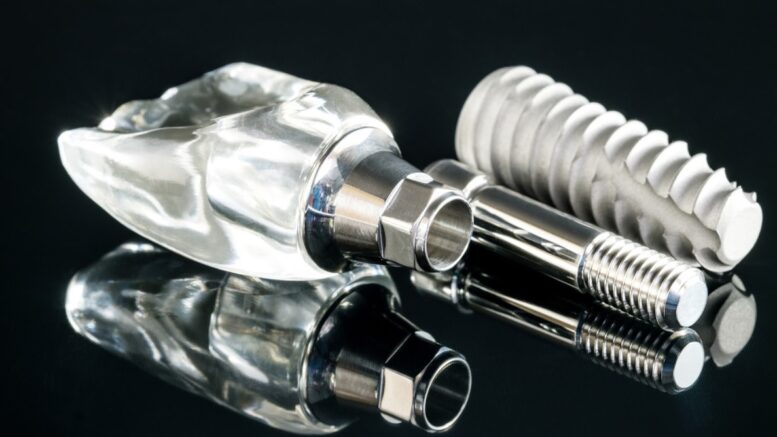Dental implant technology has come a long way since its introduction in the 1950s. Initially, dental implants were made of metal and were used to replace a single missing tooth. But today, dental implant technology has advanced to the point where entire arches of missing teeth can be replaced with a combination of strategically placed implants and replacement teeth.
Dental implant technology provides a permanent solution for missing teeth. Unlike traditional dentures or bridges, dental implants are anchored into the jawbone, providing a stable base for replacement teeth. This procedure allows patients to eat, speak, and smile confidently, knowing that their replacement teeth won’t slip or shift.
One of the latest advancements in the field is 3D printing to create custom implant abutments and even replacement teeth. According to an informative read from a reliable site, 3D printing can help reduce the cost of implant-supported dentures and make the procedure more affordable for patients.
Besides 3D printing, there are new innovations in implant design and placement techniques that make the procedure more efficient and effective. Keep reading to learn about these innovations in dental implant technology.
Computer-Guided Surgery
Computer-guided surgery is a revolutionary technology that has dramatically improved dental implant surgery’s accuracy and success rate. This technology creates a digital map of the patient’s jaw and teeth using computer software and advanced imaging techniques. This map is then used to guide the surgeon during the implant placement procedure, ensuring that the implant is placed precisely and at the correct angle for the best possible results.
Unlike traditional implant surgery, which relies on the surgeon’s expertise and skill, computer-guided surgery elevates the procedure by providing real-time feedback and adjustments. As a result, there are fewer complications and a higher likelihood of success.
Computer-guided surgery systems include the CEREC Guide, SimPlant, and i-CAT, among others. These systems’ capabilities and features differ, but they all aim to provide precise and accurate implant placement.
Zygomatic Implants
The zygomatic implant is a specialized implant anchored in the zygomatic bone located in the cheek area. This bone is much denser than the jawbone and can support a larger implant. That makes zygomatic implants an ideal option for patients who have experienced significant bone loss in the upper jaw, such as those who have had radiation therapy or have a condition such as brittle bone disease.
Unlike traditional dental implants, which are placed directly into the jawbone, zygomatic implants are placed into the zygomatic bone and then connected to the upper jaw via a special abutment. It allows for a secure and stable foundation for the replacement tooth or teeth.
Moreover, zygomatic implants can be placed in a single surgical procedure, whereas traditional dental implants require multiple methods. Thus, it can save patients time and money and reduce overall recovery time.

All-On-4 Implants
All-on-4 implants are an innovation in dental implant technology that replaces a full arch of missing teeth with just four implant posts. This technique utilizes the angled placement of the implants to maximize available bone and provide support for the replacement teeth.
The All-on-4 implant procedure is a method where only four dental implants are needed to support a full arch of replacement teeth. The process starts with a detailed examination and plan to decide if the patient is eligible for the procedure.
After the implant posts have been planned, they’re inserted into the jawbone. The implants are left for a few months for the jawbone to fuse with them. Once the integration is complete, the replacement teeth are fixed to the implant posts.
All-on-4 implants are a highly effective option for patients who are missing a full arch of teeth. They provide a secure, stable foundation for replacement teeth, which can significantly improve the patient’s confidence to speak, eat, and smile.
Immediate-Loading Implants
Immediate-loading implants, also known as same-day implants, are a relative innovation in dental implant technology that allows the replacement tooth to be placed on the same day as the implant surgery. This technique is in contrast to traditional dental implant surgery, which requires a period of healing before the implant can be loaded with a replacement tooth.
The process of immediate loading implants is relatively straightforward. The implant is placed into the jawbone, and a temporary replacement tooth is placed on top. The dental professional can replace this temporary tooth with a permanent tooth once the implant has fully integrated with the jawbone.
Traditional dental implant surgery requires multiple appointments, which can be costly and time-consuming. On the other hand, the dental professional can do the immediate-loading implants in just one session. In addition, unlike rational dental implants, immediate-loading implants are less invasive and have a lower risk of complications.
Conclusion
As innovations in dental implant technology continue to be developed, it’d be best for patients and healthcare providers to stay informed and educated about the latest advancements. Doing so allows patients to make informed decisions about their dental care, and healthcare providers provide their patients with the best possible treatment options.
